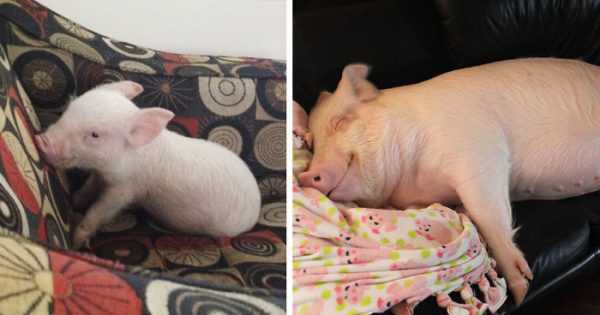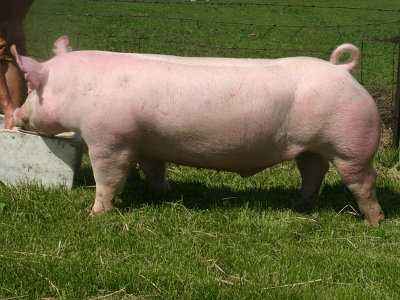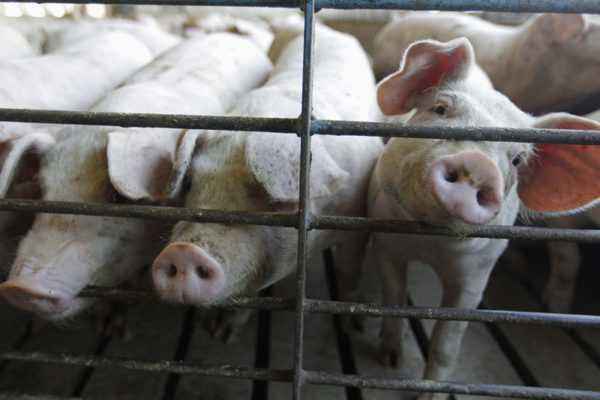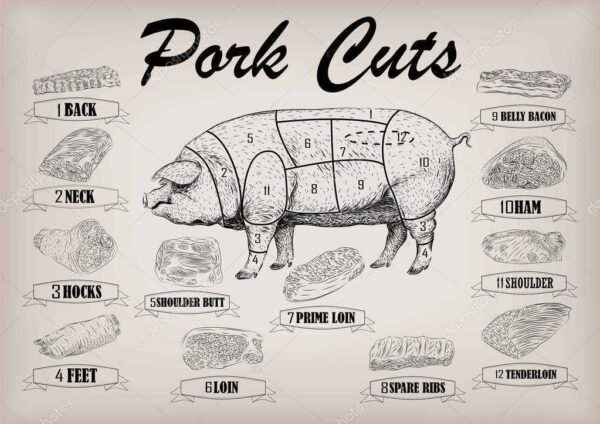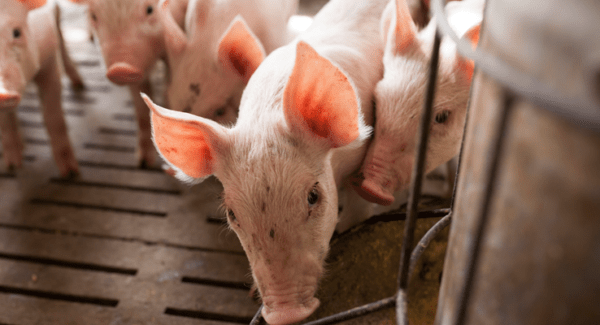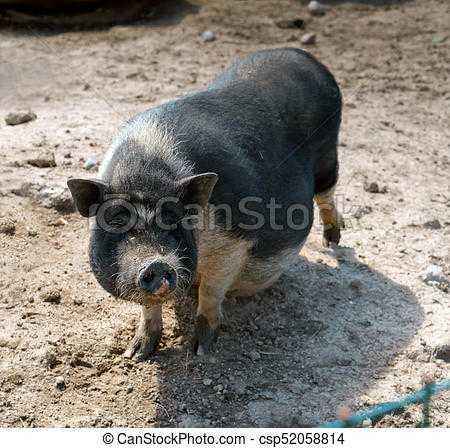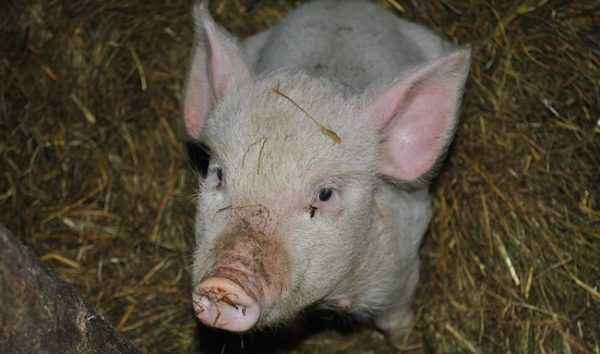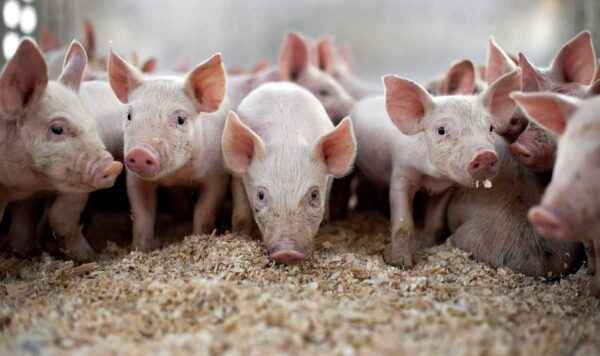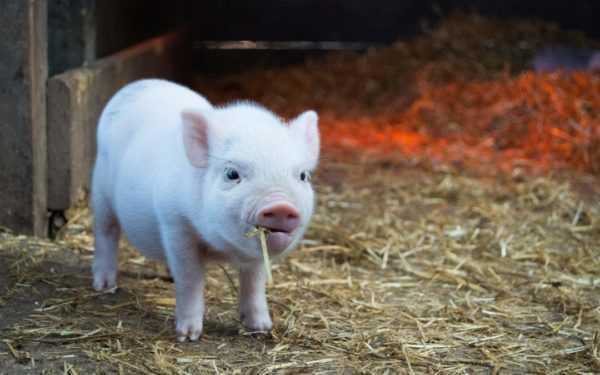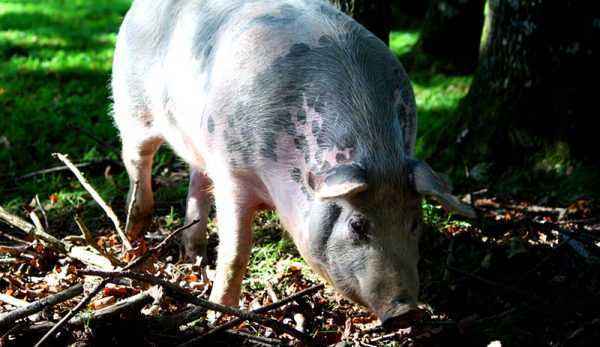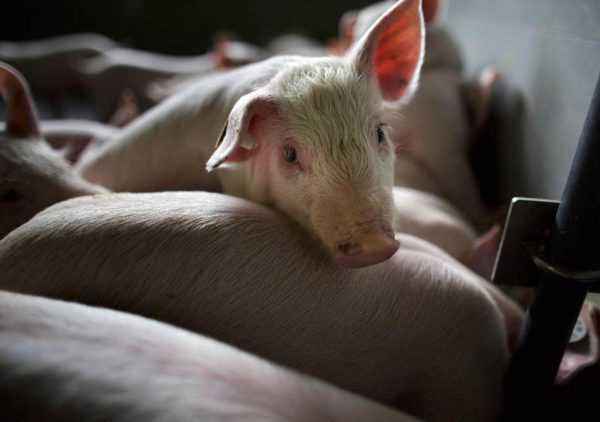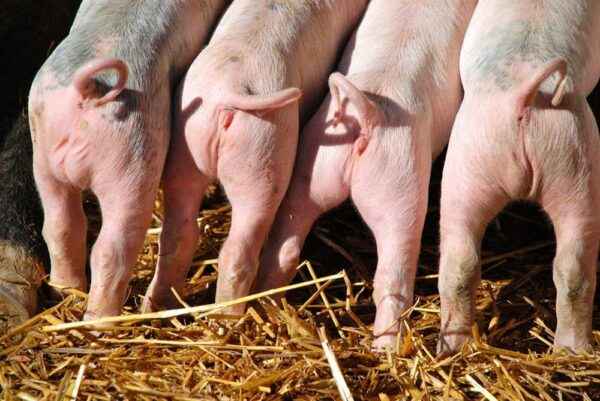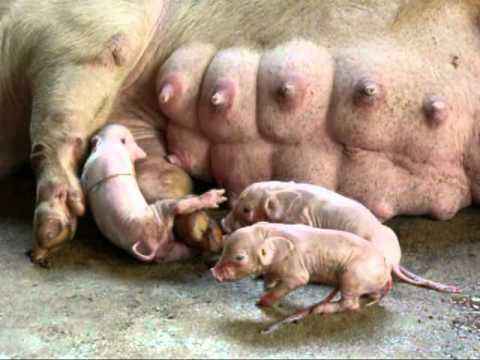Classical swine fever is a viral infectious pathology that most often occurs in acute, less often in subacute and chronic form. With this pathology, the lymph nodes, bone marrow, blood-forming organs, and intestines are affected. The disease manifests itself as an increase in temperature, hemorrhagic rash, diarrhea and constipation. The mortality rate of the livestock reaches 80-100%, treatment has not yet been developed, and emergency sanitary measures are being taken in the lesion focus.To prevent disease, all pigs are vaccinated. The plague is not transmitted to humans and is not dangerous for other animals.
- Ethiology
- Epidemiology and Pathogenesis
- The clinical picture of the disease
- fulminant form
- acute form
- subacute form
- Chronic form
- Complicated forms
- Pathological picture and diagnosis
- Treatment and prevention
Etiology
The reason for classical swine fever is a pestivirus in the family Flaviviride. Its genetic material is contained in RNA. The virion is covered with a protein-lipid membrane. Particle sizes – 40-60 nm. The virus is very stable in the environment, tolerates drying, low temperatures and freezing. The optimal pH for it is 5-10 units. During pasteurization, it dies no earlier than an hour later.Here are some indicators of its stability:
- stored in chilled meat and carcasses for 2-4 months;
- in frozen meat for several years;
- in pickles – about a year;
- in smoked meats – 1-1.5 months;
- at a temperature of 2-4 ° C lasts 4-6 months;
- at a temperature of 37 ° C remains active until 18-20 days;
- at a temperature of 70-80 ° C disinfection occurs only after an hour;
- dies instantly when boiled.
The classic swine fever virus has sensitivity to ethers, chloroform, and trypsin. The best disinfecting solutions for its neutralization are 2% caustic soda, 20% bleach, 3-6% cresol oil solution.
There are 3 pathogen serotypes: A, B and C. Serotype A causes a classic picture of acute plague in pigs, as well as its fulminant forms. Serotype B of the plague pathogen causes infection in piglets, atypical and chronic variants of the course in adult animals. Frequent epizootic spread, as in serotype A, is not observed. Serotype C virus is used in laboratories to obtain vaccine material.
Epidemiology and Pathogenesis
Classical swine fever was first described in 1810 in Tennessee. After 20 years, outbreaks were recorded in Ohio. Because of this, the disease was first called American Swine Plague.In the middle of the XIX century, pathology began to spread in Europe, and by the end of the century it came to South Africa and the southern American continent.
The only source of classical swine fever is sick pigs and sick virus carriers. The virus is preserved in the natural environment, in the wild boar population. Neither humans nor other animals are afraid of the disease, they can only be mechanical carriers.
A virus is released with urine, feces, nasal secretions, saliva, vomit, and abortive material in sows. Once in the environment, the pathogen persists for a long time and can be transported over long distances.
The main transmission factors are contaminated feed, especially animal products, such as meat and bone meal. Also, the virus can be transported along with bedding, equipment, and often infections occur when livestock are transported in vehicles where sick pigs or virus carriers used to live. Carriers can be rats, other rodents, strangers on a pig farm.
Infection occurs alimentary or by airborne droplets. Having penetrated the blood through the mucous membranes, the virus of classical swine plague spreads throughout the body. It is tropic to almost all organs, cells and tissues, but its highest concentrations are detected in the lymph nodes, walls of blood vessels and intestines, in the bone marrow.
In the bloodstream, the pathogen is detected 6-7 hours after infection .It begins to multiply intensively in lymphocytes, and then enters the lymph nodes, where it can be detected 16 hours after the first contact. During the first 3 days, the pathogen enters the lungs and intestines, approximately on the 4th day – into the heart, uterus and other organs. Active isolation of viral particles begins from 6 days after infection. Very often this happens even before the appearance of clinical signs.
Clinical picture of the disease
The incubation period of swine plague lasts 3-9 days. In rare cases, it can be delayed for 12-20 days. Pathology proceeds in lightning fast, acute, subacute and chronic variants. The first 2 forms are most characteristic of epizootics, a subacute and prolonged course is possible in sporadic cases provoked by the serotype B.
fulminant form
Signs of fulminant plague in pigs develop rapidly, within 1-2 days. Animals become lethargic, their temperature rises to 40-42 ° C, vomiting appears, appetite is completely absent. Breathing and palpitations are becoming more frequent, hemorrhagic rash and extensive red spots are revealed on the skin. How they look is best seen in the photo. Most often, fulminant or super-acute form of swine plague is observed in young individuals.
Acute form
The duration of this form of the disease is 3-7 days.In pigs, the temperature also rises, vomiting and constipation are observed. They lie most of the time, buried in the litter, do not eat. In the future, constipation is replaced by diarrhea, streaks of blood are visible in the feces. The amount of urine is reduced, often it becomes a dark brown hue. Females abort, mucus flows from the nose and eyes, pus, sometimes the discharge becomes bloody.
In some parts of the body pustules appear on the skin, from which yellow-green pus is secreted. A bright hemorrhagic rash is visible, when merged, extensive red spots form that do not disappear when pressed. The stigma, ears and legs are cyanotic, weakness progresses. The number of lymphocytes in the blood decreases.
There is a nervous form of the classic swine plague. With this type of disease, the temperature may remain normal. Animals have cramps or nerve twitching of muscles. Hind legs weaken, paresis or paralysis may occur. The periods of excitement in the pig are replaced by apathy and drowsiness. The animal dies after 1-2 days.
Subacute form
Subacute classical swine fever and symptoms of this pathology develop with a long course of acute form with a not very pronounced clinic. The temperature in animals is not very high. Signs of dehydration, diarrhea, cough come to the fore. Animals are lethargic, lose weight dramatically, extensive purple or red spots, traces of hemorrhages are visible on the skin. Pus is secreted from the nose and eyes.Recovery is extremely rare.
Chronic form
Chronic swine fever is rare. Sometimes this course is observed in vaccinated animals with insufficient antibody levels after vaccination. The disease lasts 1-2 months. Body temperature may remain normal or increase slightly. Animals gradually lose weight, the back is sharpened and sagging, the back bends. The pig has no appetite, for most of the day it lies buried in the litter.
In the foreground are lesions of the gastrointestinal tract and respiratory system. Purulent-fibrous inflammation develops in the stomach, intestines or lungs. Pigs are vilified, sometimes there is blood in the feces, the smell is fetid. The respiratory system is diagnosed with pneumonia, pleurisy, pig wheezing, coughing. Heavy breathing, rapid. Purulent conjunctivitis and serous-purulent runny nose are characteristic of this form. Sometimes the chronic form goes away with periods of remission and exacerbation. In some cases, the symptoms are not pronounced. The latent and asymptomatic form is most dangerous, as a sick animal becomes a source of infection.
Complicated forms
Swine fever can be complicated by salmonellosis or pasteurellosis. In the first case, an intestinal form of the disease develops. Appears profuse fetid diarrhea, feces gray-green, watery, with mucus, blood. Salmonellosis is transmitted from sick animals to humans, therefore, with such a complication, special care should be taken.Pasteurellosis causes pulmonary symptoms: cough, shortness of breath, wheezing, signs of bronchitis and pneumonia.
Pathology and diagnosis
When an outbreak of classical swine fever is detected on a pig farm, additional laboratory diagnostics must be performed . First, an autopsy is performed on dead pigs.The pathological changes in this disease are quite vivid:
- skin on the abdomen, inner thighs, chest of a crimson hue with multiple hemorrhages;
- lymph nodes in the section have a marble pattern, enlarged, their color is crimson or completely black;
- in the lungs hemorrhages, heart attacks, multiple spots on the surface are detected;
- heart with multiple hemorrhages along the vessels, in the epicardium and pericardium;
- spleen is not greatly enlarged, tapered infarcts are detected on the periphery you, facing the wide edge of the organ, is a typical symptom of CSF;
- kidneys of sick individuals with signs of circulatory failure, anemic, with spot hemorrhages on the mucous cup;
- the stomach and intestines are inflamed, bruising is visible under the mucosa (especially pronounced on the 7th-9th day of the disease);
- with subacute flow, enteritis and gastritis with hemorrhages and bleeding are observed;
- with chronic plague in the stomach and intestines, ulcers are revealed with areas of necrosis, severely swollen lymph nodes in the mesentery, with ulceration iyami. These symptoms are especially pronounced in the cecum and colon.
They confirm the diagnosis of classical swine fever by examining the blood, lymph nodes, bone marrow and spleen in a laboratory. Virological studies are carried out by PCR, enzyme immunoassay, and the method of fluorescent antibodies.Use biological samples by introducing material to non-immunized piglets. You can differentiate pathology from such diseases:
- African type of swine plague, or ASF;
- salmonellosis;
- streptococcal infection of the skin or erysipelas;
- Aujeszky’s disease;
- dysentery;
- gastroenteritis;
- pasteurellosis;
- flu and parainfluenza.
When making a diagnosis, it should be borne in mind that this type of pathology is especially dangerous. It is necessary to take control measures that are prescribed by law.
Treatment and prevention
The treatment of classical swine plague has not been developed, therefore all sick animals must be destroyed. Although the pathology is not transmitted to humans, meat cannot be eaten: the pathogen remains in it for a long time, it can be imported to other territories, causing epizootics among animals. All carcasses after slaughter must be burned. All farms in the region are quarantined, an emergency is declared, and it is forbidden to export meat products beyond its borders.
The most reliable way to prevent classical swine fever is through vaccination. Vaccinations give piglets live inactivated vaccines in the first weeks of life. The effect of vaccinations persists throughout the year. The vaccine is administered in the form of injections. There are also oral medications that give young animals in farms or regions suspected of having an infection.During an outbreak of epizootics in pigsties, aerosols are sprayed into weakened vaccine viruses.
Measures to combat any infection will not be effective if it is not prevented in time. To prevent classical plague viruses from spreading to farms, diseases and mortality, the following measures should be taken:
- Only buy vaccinated animals with all veterinary certificates from prosperous farms and regions.
- Again arrived pigs must be quarantined for a month, kept separately from the rest of the herd.
- Inventory, transport, household items, clothing belonging to humans, periodically disinfected.
- The pigsty and places for walking should be properly fenced so that stray cats and dogs, wild animals, rodents do not get into it.
- Food and water should be disinfected, it is better to buy industrial feeds that undergo heat treatment.
- In the pigsty, from time should be carried out deratization, as rodents are mechanical carriers of infection.
If the classic pork plague broke out on the farm, quarantine is imposed for 40 days, the herd must be eliminated. Time is counted from the case of the last animal. After that, a thorough disinfection of the premises is carried out. Litter and cheap inventory burn. For disinfection use hydrated lime, bleach, cresol. Bred funds as attributed to the instruction.

